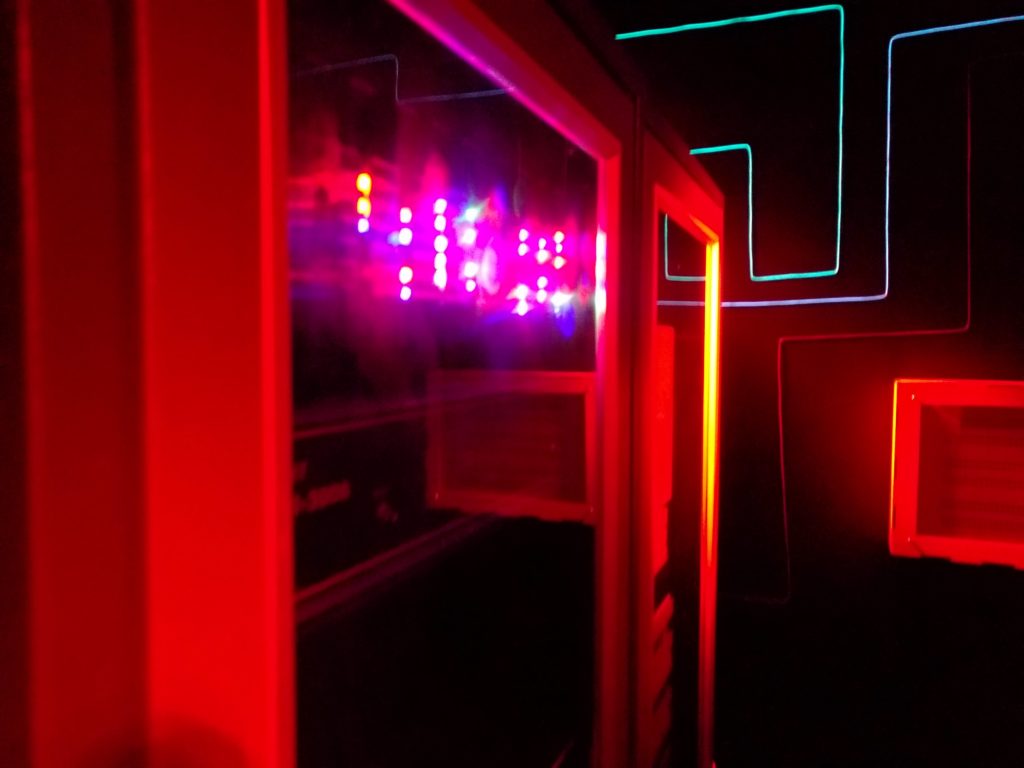
We relocated a year and a half ago allowing us to make new games and more escape rooms. However due to this we closed one of our favourite games, The Crypt. We learnt a lot from designing and running this game for two years so keep reading to take away our most valuable lessons.
Sudden Immersion: Getting everyone involved in a snap
The opening of The Crypt was gripping.
After a ten minute briefing the games master would blindfold the players and line them up immediately creating tension. Any uncertainty of how immersive or exciting the game was washed away and replaced by suspense. Then we handcuffed them.
Being locked up is certainly the epitome of escape rooms and this really worked for us. However, I would urge all owners to have fire safety precautions in place. Use quick release handcuffs. Linked together, players immediately work as a team to overcome their limits. A great start to the game and one that throws them into the world straight away.
You could call this Sudden Immersion and we use it in all our games at our new site. All our Games Masters dress up for the games created humour and a sense of stepping out your comfort zone. All the games have minimal briefing whilst still conveying as much information as possible. And all our games get started straight away with the clock ticking. I’d heavily suggest designing this way for any escape room; the longer you take the longer it is until the players are having fun!
Getting Messy: Keep it simple, stupid
In all our escapes we like to have the players feel like they can alter their environment and change a room’s state for the future. We do this mostly through consumables. You may end up cutting wires, popping balloons, or maybe even making breakfast (see ‘Dreamscape‘).
But what’s something you won’t find? Water.
The Crypt’s main mechanic involved the players gathering pieces of piping in order to create an aqueduct from a pot of water to a funnel that contained the final key they needed. Every puzzle, challenge, and riddle they overcame brought them closer to this escape by earning them a precious piece of piping. It was a nice central theme to the game but it had one issue. Creating piping is not simple on a time budget.
Almost anyone could link piping and pour water down it in a normal circumstance but when under severe time pressure and a strong driving force to escape players would often act rashly. Frequently we saw players pour water before the piping was complete, tip pipes to help it go faster (but mostly over them), and even forget that water only flows downwards….
The point is players don’t think rationally when under pressure and you need allowances for this. Water is merciless.
Once the water was spilt not only did it create a hazard that we’d need to enter the game to resolve but it also usually meant the players could not be successful. This is no fun in the rare instances players would still have 30 minutes left.

If you want to use consumables then do, just always consider that players can be rash and that you should aim for destruction or spillage to be the wanted result to make things simple. That, or make it the final puzzle of the game (see Cypherdyne).
That, or invest in mops.
If you enjoyed these tantalising tid-bits then check out part 2 in February.


Leave a Reply
You must be logged in to post a comment.